St. Patrick Columbus
Parish Tour CA: rqdfXq8C6F8ZZHRqnLk65cMS5JM5PCAXMfmnCiepump
Welcome to this virtual tour of the artwork that adorns St. Patrick Church.
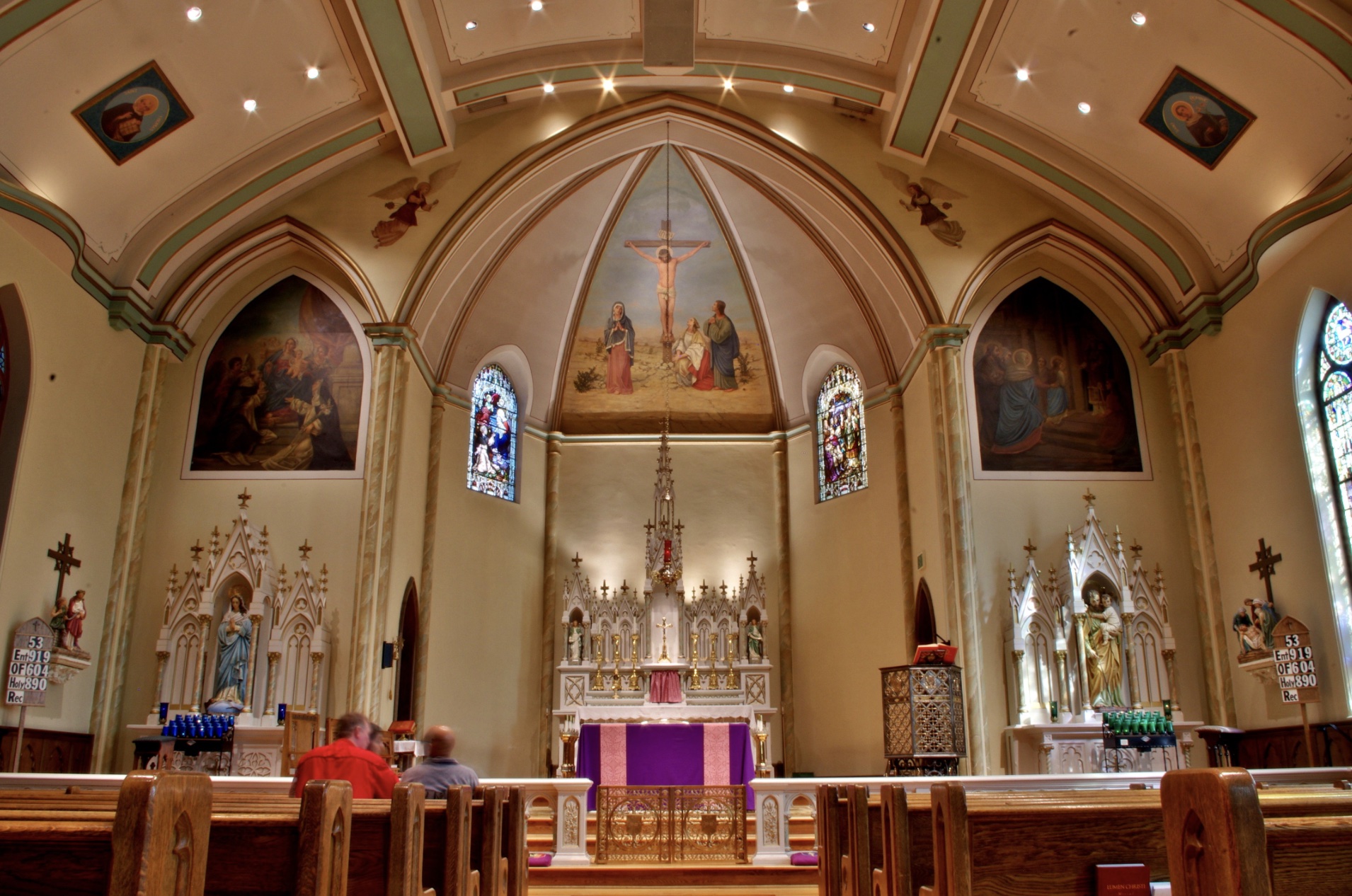
Welcome to this virtual tour of the artwork that adorns St. Patrick Church.

These The sacred symbols on the kneeler cushions at the Communion rail.
The St. Patrick Women’s Club stitched sacred symbols for the kneeler cushions for our Communion rail. The icons were designed in 1994 by Gloria Collett, and completed by Women's Club members including Nancy Shivley.
The following descriptions are based partly on a brief key with one-word titles of the symbols, and partly on some brief research Fr. Stephen completed in late 2022.
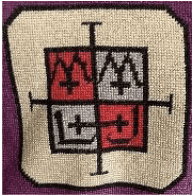
The Evangelists' Cross: contains the first letter of each of the four Evangelists: SS. Matthew, Mark, Luke and John. The four Evangelists are also identified by the four symbolic creatures we find in Revelation 4:2, 6-8, as well as in Ezekiel 1:5, 10, of a man, a lion, a calf, and an eagle.
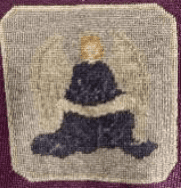
St. Matthew: depicted in the form of a man with a scroll. His Gospel begins with the genealogy of Joseph, the foster father of Jesus

St. Mark: depicted in the form of a lion. His Gospel begins with a voice crying out in the wilderness, “Prepare the way of the Lord.” Lions dwell in deserted places, and their voices cry out with a roar.
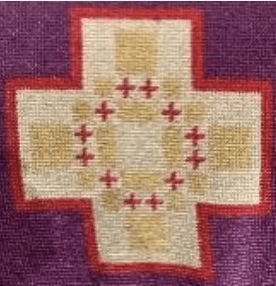
The Apostles' Cross: has twelve smaller red crosses within it. The symbols of the Apostles sometimes connect to their occupation during life, but more often connect to the means of their martyrdom—the death they embraced with courage to bear witness to the truth of Christ.
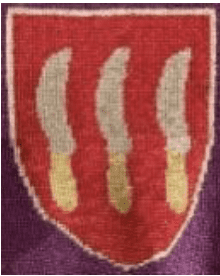
St. Bartholomew: depicted by knives—by tradition, he preached in India, and was martyred by being flayed alive.
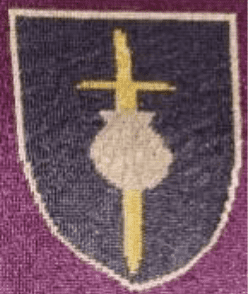
St. James the Greater: depicted by a sword and seashell. He was the first of the Apostles to be martyred—he was beheaded by Herod Agrippa. Tradition has it that he also preached in Galicia in northwest Spain, near the sea. His relics are kept in the great pilgrimage church of Santiago de Compostela, destination of the famous Camino de Santiago de Compostela. To this day, pilgrims on the Camino wear shells as a sign of their pilgrimage.
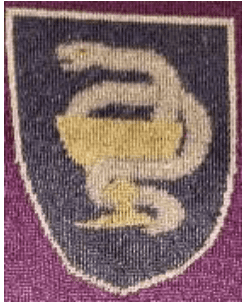
St. John: depicted by a snake coiled around a chalice. One tradition tells that a pagan priest challenges him to drink a cup of poison without being harmed. John not only survives but resurrects two men who had died from the very poison given to him.
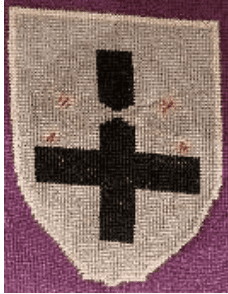
St. Peter: depicted by an upside down cross and keys. Tradition has it that St. Peter was crucified in Rome upside down. The keys refer to the Lord giving him, as the Rock on which he will build his Church, the keys of the Kingdom of Heaven and the power of binding and loosing (Matthew 16:19).
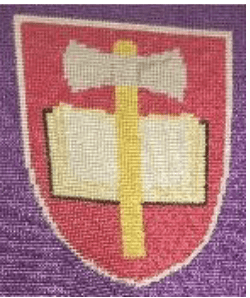
St. Matthias: depicted by an axe and a book. By tradition, St. Matthias preached in Judea, and was martyred by beheading. The book is a symbol of the Gospel he preached.
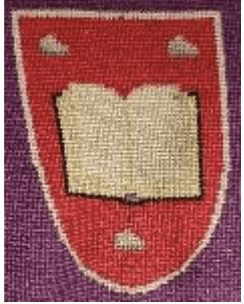
St. Barnabas: This saint’s attribute is a book or scroll. Many of the legends say that when he went to preach in Cyprus, he took a copy of Matthew’s gospel with him and would lay it on sick people to cure them. He was martyred by stoning, and then burned with fire.
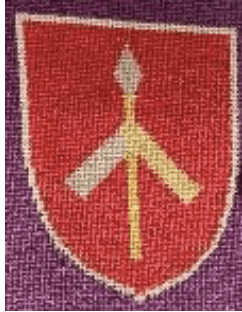
St. Thomas: depicted by a carpenter’s square and a spear. The reason for the carpenter's square is a story retold in the Golden Legend. A king in India sent an emissary to the west to find an architect who could build a Roman-style temple. St. Thomas presented himself as such an architect, so the king gave him money to build the temple with and went off on a long journey. When he returned he saw no temple. St. Thomas had given the money to the poor and spent his time preaching and converting people. He explained to the king that his "temple" would be in Heaven. Although angered at first, the king is brought around to believing in Christ. The reason for the spear comes in the next part of his legend. In another tradition, St. Thomas proceeds to another region of India where the king is not so accepting of his religion. He puts the saint through a long series of torments and finally has his executioners spear him to death.
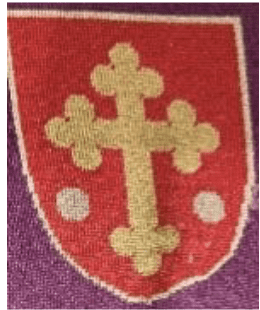
St. Philip: depicted by a cross with two stones at the base. One tradition tells that he was martyred by being tied to a cross, and then stoned to death while on the cross.
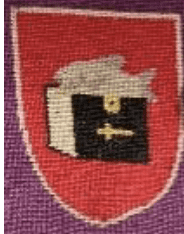
St. Simon: depicted by a fish on a Bible. This is a sign that he was a great fisher of men in preaching the Word of God.
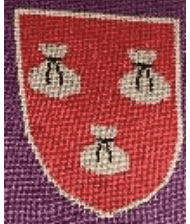
St. Matthew: depicted by three money bags. St. Matthew was a tax collector at his post when Jesus called him. St. Matthew left all behind to follow the Lord.
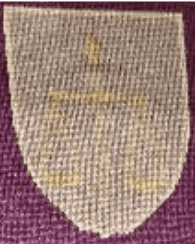
St. Michael: depicted by a sword and scales. St. Michael, the prince of the heavenly host, is the one who casts Satan out of Heaven in a great battle (the sword), and helps bring about God’s just judgment (the scales).

Christmas: depicted by a five-petal white rose. The Christmas rose, also known as the Glastonbury Rose, is a little white flower that grows in northern Europe during the winter. Legend has it that the Christmas rose is of miraculous origin. Supposedly, on the way to meet baby Jesus, the shepherds and Wise Men were seen by a young girl named Madelon. One by one, every visitor had something to give the baby. In addition to gold, frankincense and myrrh, Jesus was given all kinds of presents in accordance with the visitor’s ability. Realizing that she had nothing to give, Madelon wept. Then, an angel visited her. It dusted off the snow from the ground. As Madelon kept crying, her tears turned into this beautiful white flower. The angel told her that the flower represented purity, and it was the greatest gift she could give. Rejoicing, she presented it to baby Jesus.
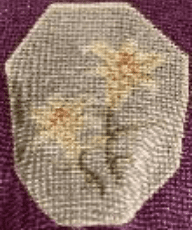
Annunciation; Presentation of the Lord: depicted by white lilies, a symbol of Our Lady’s purity, as the one who is full of grace; and the purity of our Lord Jesus Christ.
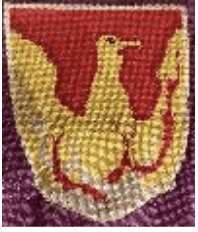
Easter: depicted by a phoenix, a legendary fiery bird which rises from its own ashes. Christians came to adopt this as a symbol of the Resurrection of Christ.

Ascension: depicted by a flaming chariot. As the Prophet Elijah was taken up bodily into Heaven in a fiery chariot, so Christ was taken up bodily into Heaven forty days after he rose from the dead.
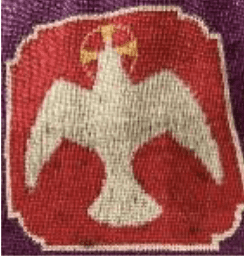
Pentecost: depicted by a dove with a cross halo. The Holy Spirit, who is symbolized by the dove, descended in power upon the apostles and disciples at Pentecost nine days after Christ ascended into Heaven.
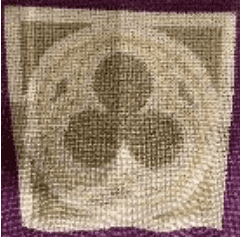
Trinity: depicted by three green connected circles. The Father, Son, and Holy Spirit are three Divine Persons in one God. The three circles recall the shamrock of St. Patrick, a means of preaching the Triune God to the people of Ireland.
Please let us know if you find any errors or have additional information on the church artwork to share!